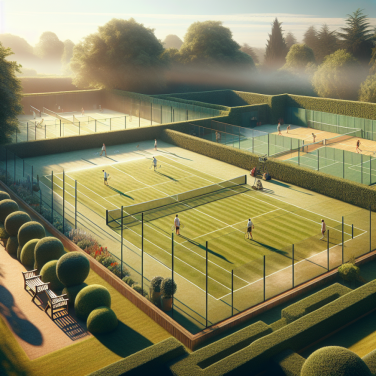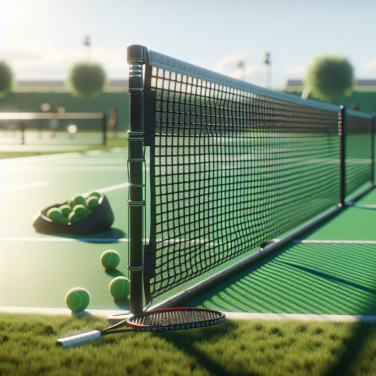Fine-Tuning Your Serve Mechanics: A Step-by-Step Guide
Fine-Tuning Your Serve Mechanics: A Step-by-Step Guide
Step 1: Establishing the Proper Stance
Your serve begins with your stance. Aim for a balanced and stable platform by placing your feet shoulder-width apart. The front foot should point towards the net post, while your back foot is parallel to the baseline. This stance should offer both stability and the necessary rotation during your serve.
Step 2: Grip Matters
For a dominant serve, master the Continental grip. It allows for a versatile range of serves including flat, slice, and kick serves. To find this grip, hold your racket as if it were an axe, this will naturally align your hand in the Continental grip position, enabling better wrist flexibility and snap.
Step 3: The Toss
A consistent toss is key for a reliable serve. Position the ball in your non-dominant hand and release it above your hitting shoulder at the peak of your reach. Avoid too much spin or wrist action in your toss—it should go up smoothly, allowing you to make contact at the highest point possible.
Step 4: The Backswing and Trophy Pose
As you toss the ball, your arms should move in a coordinated, "mirror-image" fashion: as the tossing arm goes up, the hitting arm goes back in a smooth backswing. Reach a "trophy pose" where your hitting arm is bent, the racket head pointing up, and your body is coiled, primed for the forward swing.
Step 5: The Forward Swing and Contact
Initiate the forward swing by uncoiling your body, starting from your legs and progressing through your hips, shoulder, and finally your arm. Keep your eyes on the ball and hit it with the racket's sweet spot, aiming to strike the ball with a smooth upwards motion to generate both power and spin.
Step 6: Pronation and Follow Through
During contact, pronate your forearm (rotate it so that the palm faces down after impact). This movement is crucial for adding speed and directing the serve. After impact, continue the pronation and follow through across your body. Finish with your racket on the opposite side of your body, ensuring you've transferred your weight from the back foot to the front.
Step 7: Perfecting the Service Motion
Repeat the serve focusing on fluid motion, full pronation, and a balanced follow-through. Record your serve to analyze your form and make adjustments.
Read also:
Mastering the Courts: A Deep Dive into Shanghai's Tennis Scene
Developing a Powerful Serve: Strategies for Unleashing Your Full Potential
Developing a powerful serve in tennis is about blending several physical and tactical elements to produce a shot that can set the tone for the point. When you implement the right strategies, you can unleash your full potential and have a serve that your opponent dreads.
One crucial aspect of a powerful serve is the grip. The continental grip is recommended as it allows for a variety of serves, including flat, slice, and kick serves. To maximize power and control, ensure your grip is firm yet relaxed to enable a fluid motion throughout the serve.
The stance is also significant in serving with power. A platform or pinpoint stance can be employed based on your comfort and the desired power behind the serve. Make sure your feet are positioned shoulder-width apart for balance, and align your front foot at a 45-degree angle towards the net post.
The ball toss is integral to the success of the serve. Consistency in the ball toss will lead to consistency in your serve. Aim to release the ball at eye level and toss it slightly into the court to ensure you’re hitting the ball at its peak and transferring forward momentum into the serve.
When it comes to the backswing, remember that a fluid, relaxed motion is more effective than a stiff, forced one. The backswing should be a smooth, circular motion that allows the body to coil, storing energy that will be released into the ball.
The power of a serve comes significantly from leg drive. Bend your knees deeply during the ball toss and push up off the ground as you make contact with the ball. This upward force helps generate power and adds height to the ball's trajectory, allowing for a more aggressive serve.
Shoulder rotation is equally critical in maximizing power. Rotate your shoulders back during the toss, and snap them forward rapidly as you hit the ball, using the torso to add extra power.
Your serve's follow-through should be complete and relaxed, with your arm swinging smoothly across your body as you make contact with the ball. A full follow-through ensures that you've transferred all your body’s power and momentum into the ball.
Finally, consistency in practice cannot be overstated. Serve a variety of balls, aiming for different speeds, spins, and placements. Experiment with serving under different conditions to improve adaptability and confidence.
Combine these technical components with mental strategies such as visualization, positive self-talk, and routine development. By visualizing the perfect serve, you can train your mind and body to execute it under pressure.




